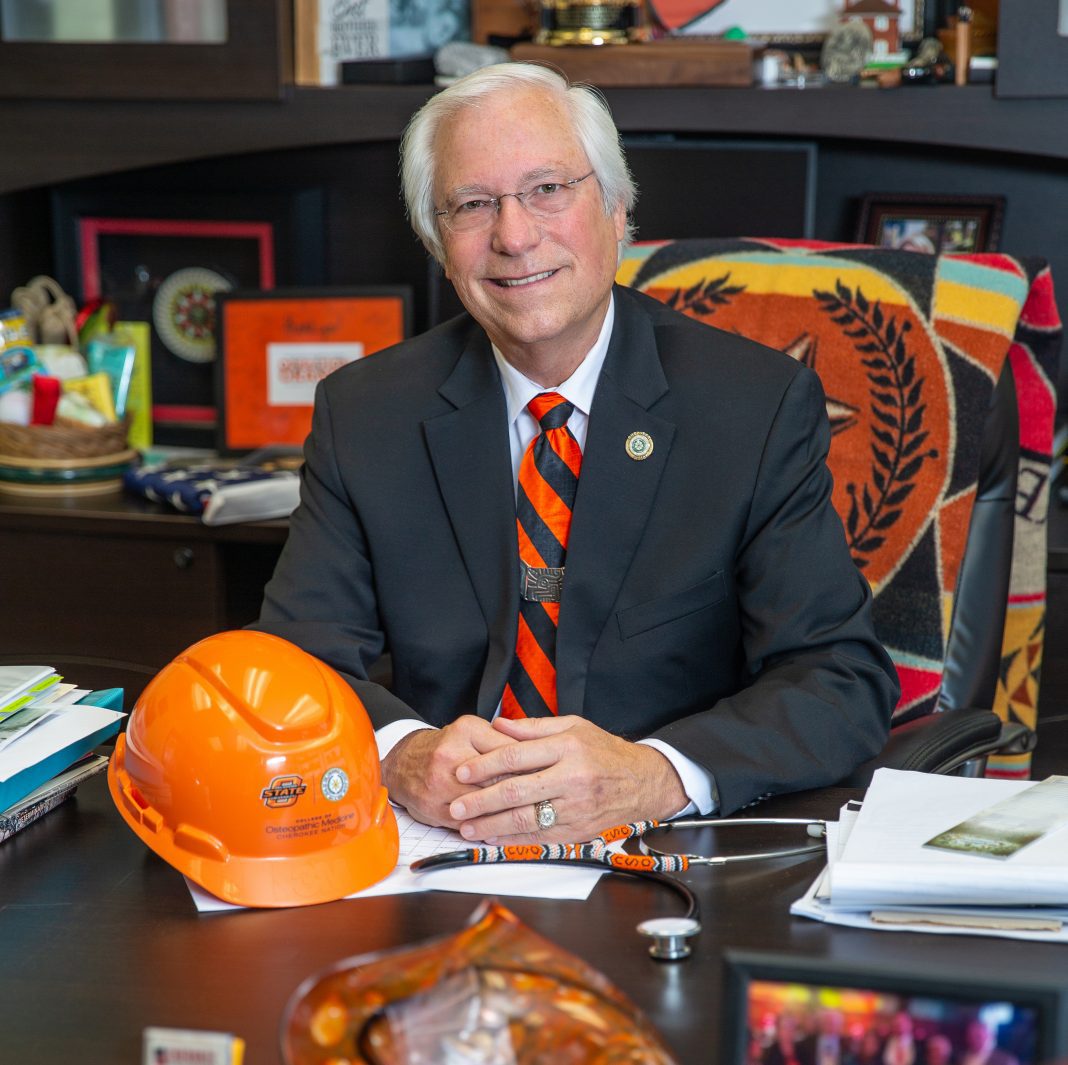It’s a difficult balancing act – focusing on the needs and talents of others while guiding those collective energies toward a common goal. Our Oklahomans of the Year have shown how to level those scales in divergent arenas.
All four – the late musician Roy Clark, social justice advocate Moises Echeverria, Cherokee Principal Chief Bill John Baker and brand-new U.S. Rep. Kendra Horn – have earned their places in the public eye by embracing leadership and giving others the opportunities to shine.
1. Chief Bill John Baker
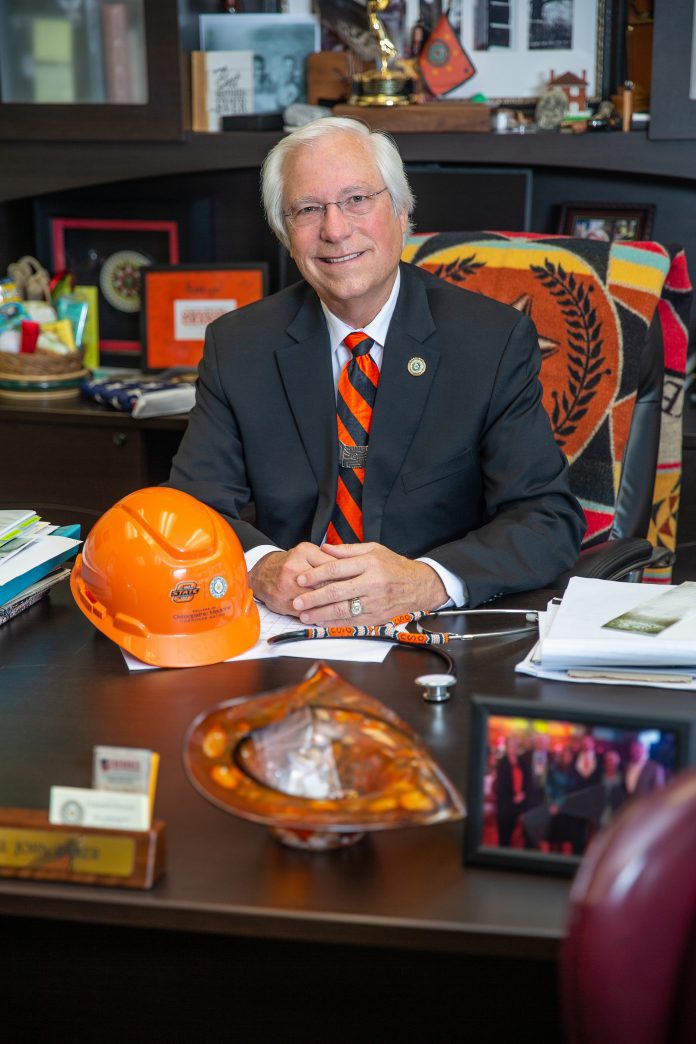
For the Cherokee Nation, the historic agreement makes sense socioeconomically, culturally. For Principal Chief Bill John Baker, it is palpable, personal.
In October, Baker announced a partnership with the Oklahoma State University Center for Health Sciences to begin the first tribally affiliated medical school in North America. The Cherokees’ W.W. Hastings Hospital in Tahlequah, as part of a 469,000-square-foot expansion of the campus, will welcome its first students in September 2020 in a separate facility.
The landmark medical school in the heart of Indian Country strikes Baker emotionally. The 66-year-old has to pause to collect himself when he considers how the institution affects him as an individual because it addresses generations of injustice and imbalance involving Native people.
“I might sit on my front porch,” says Baker, his voice quavering at the thought, “and have a smile on my face when I see the disparity of health care eliminated. I’ll be complete.”
The medical school will have about 50 students per class with a mission of practicing in rural towns, many of which have little access to health care. Discussing policy nuts-and-bolts, Baker eschews sentiment and becomes fervent, bold.
“The average age of doctors in rural towns in Oklahoma is 59,” Baker says. “Our rural clinics need doctors, especially young ones. We want Oklahoma to be a primary-care oasis in rural areas, not a primary-care desert.
“We want our kids to stay and raise their children around their grandparents. To make that happen, our kids must have a good education, and we have to create quality jobs for them when they graduate from college. These young doctors will want to stay home and serve their people in rural Oklahoma.”
Principal chief since 2011, Baker says the tribal capital’s medical school is the Cherokee Way of keeping the big picture in mind.
“There’s no doubt it’s symbolic,” he says. “This is going to change the quality and speed of health care in Oklahoma and Indian Country for the next seven generations. Our ancestors, when they needed teachers, grew their own teachers. We’re growing our own doctors with this partnership.
“We don’t look at next week or next year. Everything we do is about the great-great-great-grandchildren of the future.”
Baker says the medical school extends its relationship with OSU, which has recruited Cherokee students to its science, technology, engineering and mathematics schools for seven years with its Operation Orange program. The tribe, in turn, has pushed its high schoolers to pursue bachelor’s and graduate degrees in those fields.
“OSU would bring in medical faculty and interns who gave our students the idea that they could be doctors because they excelled in math and science,” he says. “These kids’ eyes opened up. As time passed, we began to get more Cherokees into the OSU College of Medicine in Tulsa. This school in Tahlequah is just the next step.”
Baker says the Hastings expansion, with completion this year, “was a game-changer even before we announced the medical school because it will pump $100 million annually into the Cherokee health system.” The federal government agreed to pay for operations if the tribe expanded the hospital. Such a deal was possible, he says, because transparency is a hallmark of his administration.
“It’s the only way that we can have partnerships,” Baker says. “That’s why the federal government comes to us with contracts. They say, ‘We like that your dollars go to education, housing and health care.’ You’ve got to be transparent.”
The medical school and the hospital will tackle increased medical demands in the Cherokee Nation.
“We had 1.2 million patient visits to our clinics last year, all of them rural,” Baker says. “Our mission aligned with OSU’s mission.”
These milestones reflect Baker’s commitment to 365,000 tribal members.
“The only reason for the office of principal chief is to make the lives of Cherokees better,” he says.
The Cherokee Nation, which employs 11,000 people, gave more than $5 million in 2018 to school districts within its jurisdiction – an average of $180 per student.
“Those dollars are outside the school funding formula, so they really appreciate it,” Baker says. “Some superintendents have told me that without the money they would have had to drop art or band programs.”
The monetary commitment extends to collegians, too.
“We have 5,000 Cherokees on scholarship,” Baker says. “We don’t want to export our students to any other state. We invest heavily in them.”
His financial savvy is also personal; he has run Baker Furniture in Tahlequah, his hometown, for 46 years. He connects his experiences as a small-business owner to running a tribal enterprise that pumps $2 billion annually into the economy.
“Every side job that came with running the store, such as being a contractor to build homes, has helped in running the tribe,” Baker says. “There was no learning curve when I took over.”
His knack for making money began as a boy.
“My first business was as a Grit entrepeneur,” says Baker, referring to the national weekly publication common throughout rural America during much of the 20th century. “I walked all over town selling. I still have that canvas bag.” – BW
2. Kendra Horn
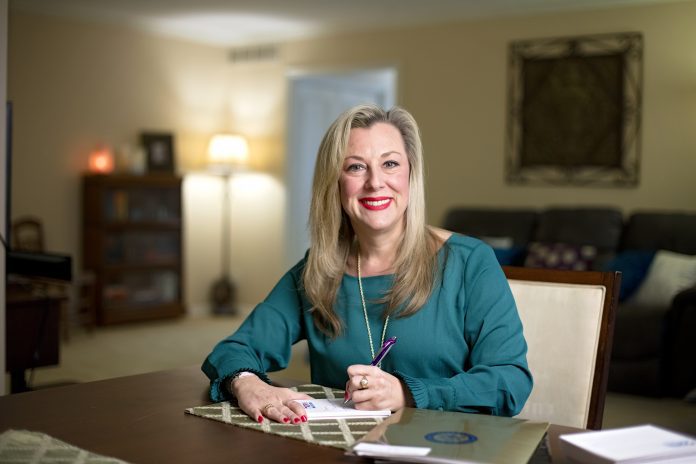
After more than 40 years of Oklahoma’s 5th Congressional District being red, Kendra Horn decided it was time for a new color.
On Nov. 6, voters ushered now-U.S. Rep. Horn into office over incumbent Republican Steve Russell to flip the Oklahoma City district blue in a historic upset. She is the first Democrat to hold the seat since 1975.
Horn, who has worked as an attorney and in the aerospace industry, has also spearheaded two nonprofits aimed at empowering women politically.
“I joined Sally’s List – an organization that recruits, trains and supports women running for office – because Oklahoma has historically ranked at the bottom of the nation when it comes to women serving in public office,” Horn says. “That inequality has a direct impact on Oklahoma families in policy areas like education, health care, criminal justice and equal pay. I wanted to make an impact to help Oklahomans who were struggling but had very few people in power listening to them.
“Building on that, I started Women Lead in part because of my experience with Sally’s List. Women Lead is an organization that encourages women to become more involved in civic engagement. We brought training to women about issue advocacy and empowered them to go to their city councils and state legislature to promote issues that were important to them. When they ran into elected officials who didn’t listen, we found – not accidentally – that more women would be interested in running for office in order to be heard.”
Horn’s experiences in leading these two organizations heavily influenced her run for Congress.
“I’ve always tried to be involved in my community,” she says. “I think the Girl Scouts helped with that growing up, and my parents and grandparents certainly modeled and encouraged getting involved. And then at some point working with Sally’s List and Women Lead, I decided that I had to take my own advice, step up and run. I felt the time was right.”
Horn faced an uphill battle against entrenched expectations about Oklahoma’s 5th District and the leadership that was needed.
“I think the most challenging thing was overcoming the idea that a woman couldn’t possibly win this seat, especially a Democratic woman with no experience as a candidate,” she says. “It is important to note that there were also so many people who supported this campaign, and their enthusiasm was contagious.”
Although winning was important, Horn says other experiences during the race inspired her.
“One of the most rewarding things was helping young people get involved,” she says. “We made a commitment early on that young people would be valued and have ownership in the campaign. We started a Fellows Program, where we recruited young people to get involved and gave them responsibility, brought in guest speakers, did everything we could do to help them feel valued. And when it came time to work, they got to work knocking on doors and making phone calls.
“So, when this historic election night rolled around, there were two groups of people on stage with me when we announced our win: my family and our Fellows. They were and are that important to me, and it’s a program I plan on continuing.”
Horn, a Chickasha native, comes from a long line of small-business owners passionate about service to their communities.
“Taking care of others is something that generations of my family have valued,” she says. “I think a lot of Oklahoma families value helping a neighbor out, or a friend who could use a hand up.”
Horn plans on taking these Oklahoma values straight to Washington, where, in addition to working toward her platform issues of education and health care, she is determined to focus heavily on service.
“Members of Congress help constituents with Social Security problems, veterans’ claims, disability benefits and a host of other government services that are the difference between economic or health security and falling behind on a mortgage or health care costs,” Horn says. “People won’t care if I’m a Democrat or Republican, a man or a woman. All they will know is their family may be in some trouble and we might be able to help. That’s a huge responsibility, and I have very high expectations for my office and our staff.”
In her work with the Space Foundation advocacy group, Horn learned that today’s infrastructure means more than just roads, bridges, drainage projects and levees, so she wants to bring awareness in Congress to “our electric grid, information technology supply lines and satellite systems. Aerospace and related industries are some of the top employers in Oklahoma and play a huge role in national security.”
Thousands celebrated Horn’s victory and many were surprised, including Horn herself. But the election was just the beginning for her. Now she’s ready to fight for the 5th.
“The voters here at home came out and said we need new leadership in Washington,” she says. “I will admit it was a bit surreal, but it will no doubt be counted as one of the most memorable moments of my lifetime. I felt energized and hopeful. I still feel that way.
“But now it’s time to roll up my sleeves and get to work.” – TM
3. Moises Echeverria
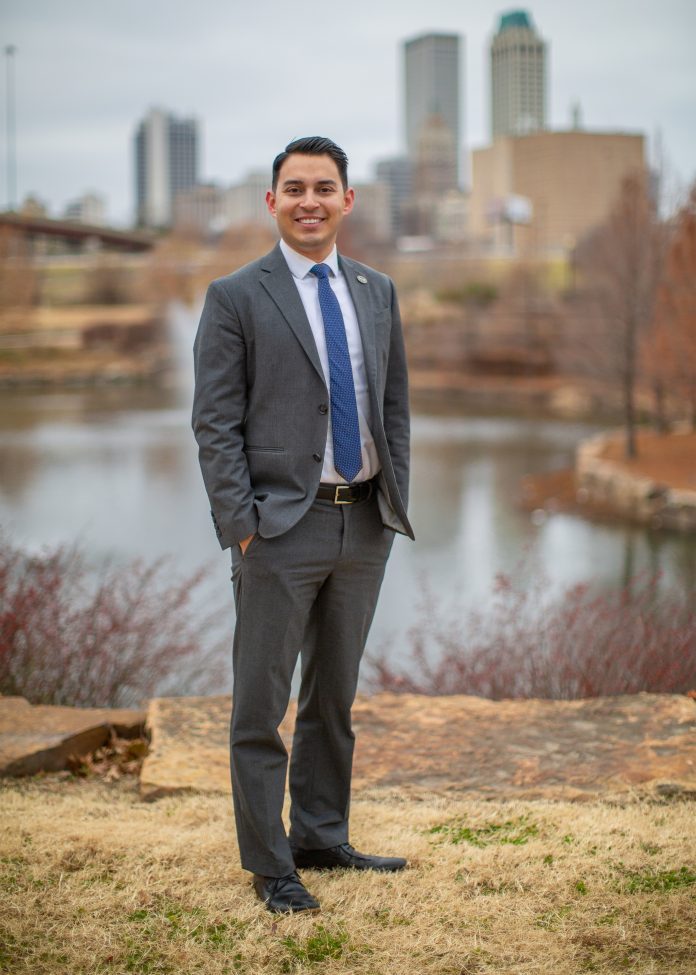
Moises Echeverria, president and CEO of the Oklahoma Center for Community and Justice, sees activities and services under his watch like children.
“It’s difficult to pick which one is my favorite,” the 33-year-old Echeverria says. “I’m so involved with all the programs.”
Since late 2016, when Echeverria had the word interim removed from his title, the nonprofit – founded in 1934 as the Tulsa chapter of the National Conference of Christians and Jews – has added staff, opened an office in Oklahoma City and increased the number of schools where it gives presentations each year.
In some ways, Echeverria is a homegrown product for OCCJ; in others, he embodies the organization’s mission of inclusion and diversity. He is an immigrant himself, who has defied stereotypes.
Echeverria’s family left Monterrey, Mexico, in 1998 because of drug-related gang violence and settled in Tulsa. While he attended East Central High School in 2002, Echeverria’s academic counselor, Carol Axley (now vice chair of programs at OCCJ), pushed him to attend Anytown Leadership Institute, OCCJ’s weeklong conference for sophomores, juniors and seniors.
“She saw something in me that I didn’t,” he says.
Echeverria, who felt demeaned by anti-immigrant rhetoric across the nation after the Sept. 11, 2001, terrorist attacks, says Anytown helped because “I had internalized all these messages of not being welcome and that I was a problem. At Anytown, I was celebrated because of my diversity.”
The program elicited “a leadership component in me to go along with my sense for social justice. It opened my eyes to the systemic level of injustice.”
He became a leader his last two years at East Central and at OCCJ, where he was a student member of the board of trustees.
Echeverria continued the association with OCCJ during and after getting a degree in business administration at Oklahoma State University, where he was the first in his large family to attend college. He became a counselor at Anytown and gave presentations before going full time with OCCJ in 2013 as programs coordinator. He kept moving up.
Echeverria’s life mirrors OCCJ’s Different and the Same outreach in more than 100 Oklahoma schools.
“It’s an anti-prejudice program that focuses on the saying, ‘Don’t judge a book by its cover,’ only with race and religion,” he says. “It’s touching to go into a classroom of second graders and see their light bulbs come on and begin to articulate how and why it’s dangerous to stereotype people.”
Echeverria says OCCJ’s voice is vital.
“We want rights for everyone because rights alone give access and opportunity,” he says. “Access levels the playing field. It’s the equitable distribution of opportunities.
“I never use the pie analogy of expanded rights taking away from someone else. We use the analogy of a table where everyone can have space and share their voice. Sometimes there are no seats, so you have to stand for a while, but ultimately the table becomes bigger for everyone.”
Interactions between people from different socioeconomic, racial, religious and gender backgrounds lead to understanding, Echeverria says.
“We’ve learned that research and data alone do not change a person’s perspective,” he says. “Once they have a stance on a particular issue, it stays, even if information challenges and refutes that belief. But if people come together as individuals and acknowledge particular prejudices, then they can have reconciliation internally and grow and expand their minds because of these experiences.”
Last year, Echeverria was chair of Tulsa’s Young Professionals, whose mission is to keep young talent in the area via inclusion and diversity.
“That was such a fun experience,” he says. “When we talk about the future leaders of this state, I get to rub shoulders with them now. We had one of the most diverse classes of leaders in 2018. That’s no surprise because the younger generations are the most diverse in history. I love the people I serve with. They have become a second family to me. We have passionate disagreements, but we all want to see our city thrive.”
TYPros, as the group is called by members, will bring back its popular StreetCred project in 2019.
“It will re-envision what an alley can look like,” Echeverria says. “We will reinvent an alley with public art and a restaurant with seating. There other cities that have mastered this. We’ll ask, ‘How can we find creative ways to maximize our space?’ The alley behind Elote Cafe [downtown] is a whole block long and we’ll work on that.”
Also in 2018, Echeverria was part of the 32nd class of Leadership Oklahoma, a statewide program. He says his constant optimism may have been why he was chosen.
“I look for silver linings,” he says. “I look to improve situations personally and professionally. We are not doomed. It’s hard, but we can come together and create a state where people want to be and raise their children.
“Empowerment is the way to change. It’s not necessarily what I can do, but who I can inspire and motivate and provide the right resources for so that we can collectively create the change we want.” – BW
4. Roy Clark
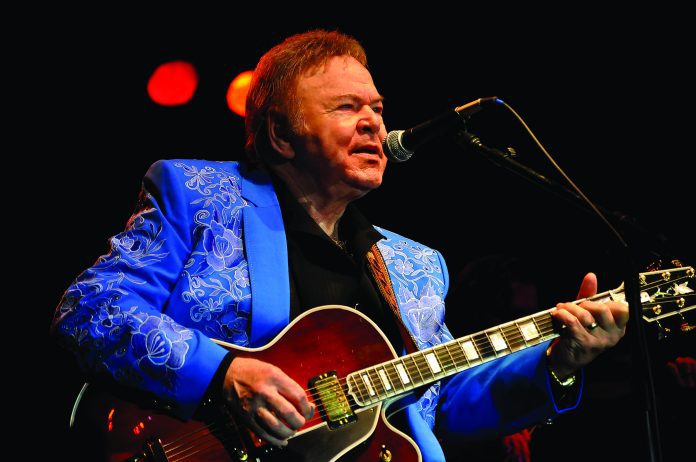
For the first half of his life, the late Roy Clark wouldn’t have qualified for Oklahoman of the Year simply because he wasn’t an Oklahoman.
The Virginia native, who got his first exposure as a performer in the Washington, D.C., area, resided in Maryland until 1976, when he moved to our state. That was at the suggestion of his longtime manager, the music impresario Jim Halsey, who was running his highly successful booking and management agency out of Tulsa.
By that time, Roy was one of country music’s biggest stars, blazing his way through hit records, industry awards and arena tours that showcased his prowess on a variety of instruments as well as his underappreciated vocal skills. (Just listen to one of his biggest hits, the excruciatingly wistful “Yesterday When I Was Young,” to get an idea of the nuances and meaning he could deliver with his voice.)
For all of that, however, Roy, who died in November at age 85, will likely be remembered most for being one of the top television personalities America has ever produced. It wasn’t only because of Hee Haw, which went from being a countrified knockoff of the late ’60s network program Rowan & Martin’s Laugh-In to a bona fide phenomenon. Roy was all over the small screen well before Hee Haw began; he appeared on and often guest-hosted The Tonight Show with Johnny Carson, and showed up on sitcoms (The Beverly Hillbillies, The Odd Couple) and variety shows, from the rock-’n’-rolling Shindig! to the Dick Clark-produced daytime series, Swingin’ Country. He first appeared on local TV in the early ’50s as a member of Jimmy Dean’s D.C.-based band, so, when the opportunities for national exposure came along, he was ready.
“I grew up in television,” he told me in 2006, “so I felt very comfortable with it. I looked at a television camera, and I didn’t see it as a mechanical device. I saw people, and I identified with those people.”
That included those well outside our borders. In 1976, after a couple of years of negotiation, Roy headed a musical delegation to the then-Soviet Union to play a series of shows that were, according to Halsey, broadcast to an incredible 781 million people. What they saw was exactly what American audiences saw: a wildly talented performer who was warm, trustworthy and funny – the kind of person you’d want to invite into your home. He became the face of America to a country that deeply mistrusted us, and there are many who say his televised concerts went a long way toward changing that perception.
So, as far as I’m concerned, any state resident who could have put “helped thaw the Cold War” on his resume richly deserves to be an Oklahoman of the Year – even in the year of his death.
(An Oklahoma Magazine columnist and contributing editor, John Wooley was asked by Roy Clark to write the text for the 2006 tour book celebrating Clark’s 60th anniversary in show business. Wooley interviewed, wrote about and worked on various projects with his friend Roy for more than three decades. Roy Clark passed away at his home in Tulsa on November 15, 2018.) – JW






















